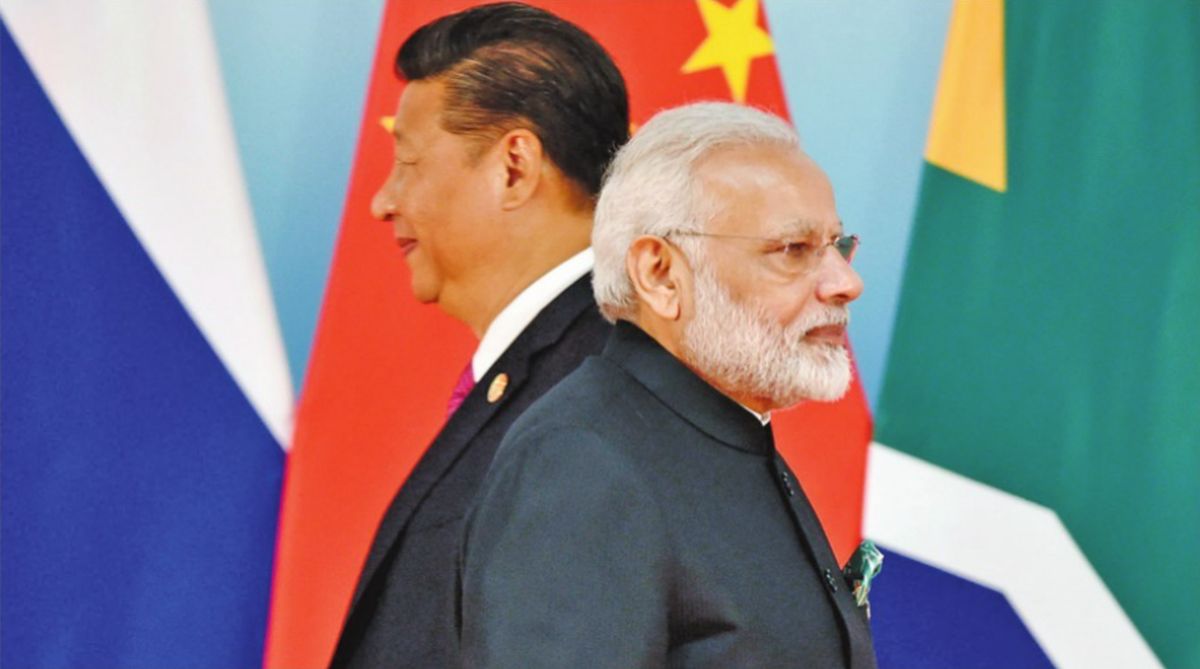The standing committee on external affairs in its latest report on Sino-India relations stated that China continues to display double standards as far as India is concerned. It ignores India’s objections on the China Pakistan Economic Corridor, that it transits through disputed territory, while at the same time opposes any project in Arunachal Pradesh for which international funding is sought on the grounds of it being disputed. The standing committee recommended that India would need to consider multiple options including enhancing its international groupings to contain China.
Press reports stated that during the 2+2 dialogue the US was keen to enhance the level of interaction within the QUAD, comprising India, US, Japan and Australia, from joint/assistant secretary to foreign secretary levels, thus raising its impact. The QUAD is aimed at containing China and its expansion in the region. It was India which turned down the proposal. India opined that if the Indo-Pacific issue was conflated, it would give the impression of ganging up against one country, China.
Advertisement
External Affairs Minister Sushma Swaraj stated, “We see the Indo-Pacific as a free, open and inclusive concept, with ASEAN centrality at the core and defined by a common rulesbased order, that both our countries are pursuing.” She also claimed that this has nothing to do with the understanding reached in the informal summit in Wuhan. It was a changed Indian stance.
Post the Wuhan meeting in April, PM Modi’s first address in an international arena was the Shangri-La dialogue in Singapore on 1 June this year. He stated, “I firmly believe that Asia and the world will have a better future when India and China work together in trust and confidence, sensitive to each other’s interest.” Simultaneously, there were reports that India elaborated its Indo-Pacific policy to both China and Russia. The central theme in the elaboration was ‘ASEAN should be central to the Indo-Pacific’, implicitly meaning not the QUAD or any single country.
This was different from the Indian view during the commemorative summit in January this year when all leaders of ASEAN nations were present for the Republic Day celebrations. During the summit PM Modi had remarked, “We work together to keep our seas safe and secure”. It was in direct reference to China developing military facilities on disputed islands in the South China Sea by which it was able to dominate and threaten central ASEAN nations.
Reports from ASEAN say that China has reached an agreement with them to continue dialogue on the code of conduct on the South China Sea. Such a decision suits China as it can now prolong the dialogue for eternity. It would be holding its first naval exercise with ASEAN states later this year. This is possibly because organisations like the QUAD, which should have been at the forefront of supporting ASEAN, appear to hesitant.
China’s involvement in India’s neighbourhood is on the rise. Its granting loans and enhancing its presence impacts Indian security concerns. The recent decision by Nepal not to participate in the BIMSTEC wargame was possibly out of fear of joining a military coalition against Chinese expansion in the Indian Ocean and the South China Sea, while it was not designed to be so.
Nations in the immediate neighbourhood and SE Asia are wary of being sucked into a QUAD versus China or India versus China standoff. There is a slow downward trend against Chinese expansion as anti- Chinese governments are now taking charge in the region, Malaysia and Maldives being examples. Even Pakistan is reconsidering future Chinese investments.
India’s National Security Council (NSC) has recently sanctioned the establishment of a China-centric study centre, termed the Centre for Contemporary China Studies (CCCS), to be funded by the Ministry of External Affairs. This would be established by drawing in China experts from multiple government organisations. It would study China from an Indian perspective and aim to provide real time policy inputs to decision makers dealing with China. The CCCS would have a governing body headed by the External Affairs Minister and the deputy chairman would be the National Security Adviser.
Therefore, Indian focus is correctly shifting towards China, despite all bonhomie displayed between the two leaders in multiple meetings, including Wuhan. Indian trust on long-term Chinese intentions remains low. India is aware that there would be clashes of interest in South and SE Asia as the Indian economy grows and it seeks new markets as also expands its footprint in areas which China considers its backyard.
While India develops its economy and military power to be able to fend off China, it simultaneously avoids openly challenging China. Both nations consider the other to be a threat to their domination in Asia. India’s participation alongside China in the SCO and BRICS appears to be aimed at furthering this strategy.
Despite growing trade and multiple high-level visits from both sides, rivalry and distrust remains. This was amply clear when the visit of the Chinese defence minister yielded nothing. It was expected that this visit would finalise the establishment of hot lines between the two countries. Incursions and standoffs continue as earlier, however both nations appear careful to avoid a Doklam type standoff again.
Economically and militarily China would always be way ahead of India. Therefore, India is adopting a defensive strategy to ward off attempts of coercion by China, till it has developed sufficient capability.
The Indian strategy presently appears to be to monitor Chinese expansion and possible intentions, while building its internal and international power to counter China. In the meantime, it would continue to contain China employing multiple international forums and security groupings. Since distrust would always exist, developing capabilities to counter Chinese coercion is paramount. Indian focus must shift Eastwards.
The writer is a retired Major-General of the Indian Army.











